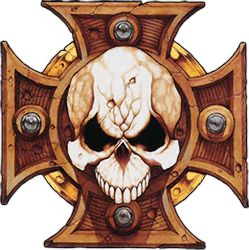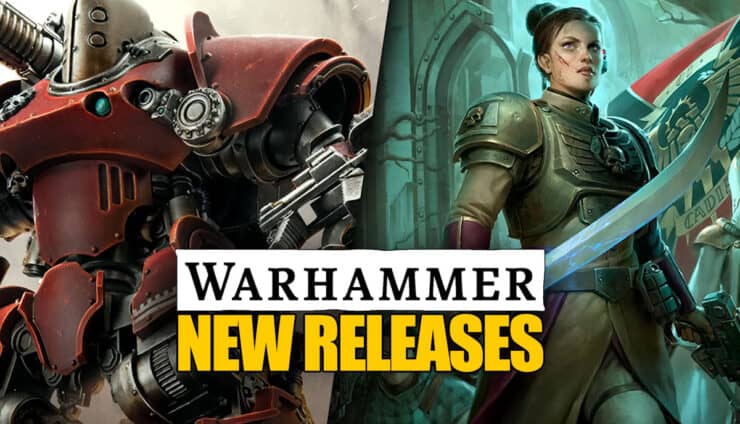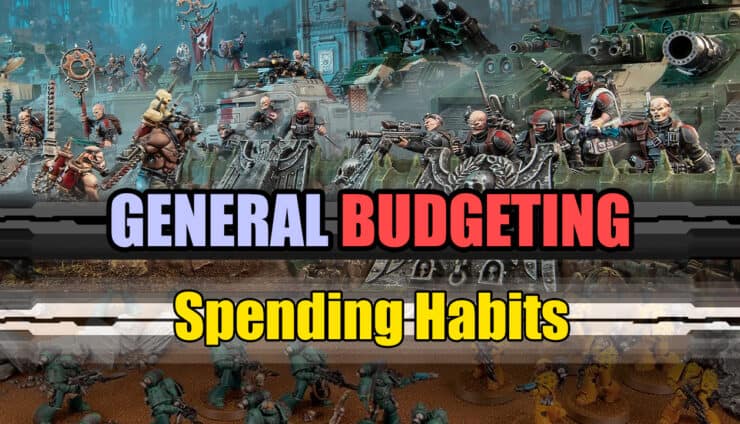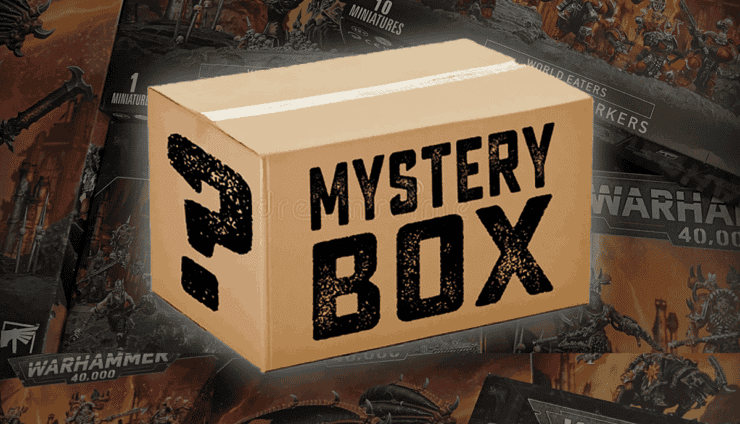JStove here, and I brought a soapbox to stand on. Now, if you’ve been playing for awhile, just move along, don’t bother. If you’re new to the hobby though, stand here and read this so I can take this soapbox and smash it over your head.
Its pretty often that you see people get into the hobby, and they make poor decisions that affect how they enjoy the game. Its very typical when you are new to get your head kicked in by a superior foe, a lot of us have been playing for years.
Some of us have been playing for decades. Its possible for some youngbloods to have match ups against players that have been playing the game as long as the poor little kid has been alive. A lot of us can trace our game back to bygone eras lost to time and space. Old shoebox rhinos, hover tanks made out of speed sticks, space dwarves, 1st, 2nd, and 3rd editions.
Rule Number 1- Never EVER ever cheap out on your tools.
So you want to be a hobbyist right? You were nine years old once, and you glued together a model car and you got those white foggy superglue stains in the windows, how hard can this be?
Well, to be fair, assembling models correctly isn’t hard. Assembling them RIGHT, however, that’s a bit more subtle.
The first rule of hobby gaming is to never go cheap on tools. If you’re going to do this and spend money on it, make sure you invest in what you’re going to need to succeed. Always have clippers. Always have a knife. Get files. Steal the emery board out of your mother’s make up kit if you have to, it works.
Buying the right tools doesn’t always mean buying the most expensive tools. The rule in the hobby, just like in real life, is to consult a professional. Men live and die by tools- Those who depend on them don’t screw around with them. Just because you can buy knives and saws and files in a GW store doesn’t necessarily mean you should.
You should always try to get everything from the source. Models come from the model shop. Cars come from a dealership. Food comes from the grocery store, and tools come from hobby shops and hardware stores. Not comic shops, not the GW, from real places that sell tools.
One of the interesting things I can tell you too, is that when you buy tools from a tool vendor who only sells tools- They’re usually cheaper.
Bulk is always better too. Get spare xacto blades, and change your blades regularly. Nobody ever got cut by a sharp knife- Its dull blades that slip and hit you. Ask anyone who has been chopping themselves up for ten years, they’ll all corroborate that.
Glue can be bought in bulk too. Don’t bother with that $6 tube of brush on crap from the GW. For $6 at a real hobby shop, the kind your dad buys model trains or RC planes at, you can buy a fat bottle of superglue that will last you 6 months.
While we’re on superglue, learn what it actually is. If you are patient, diligent, and understand how superglue works, then you’ll glue your own fingers together less often and your models will come out less sticky. All superglue starts out created equally- The active ingredient is Cyanoacrylate, or CA. If you pick up a tube krazy glue in the grocery store, and it says CA or Cyanoacrylate on the label, that’s the right stuff. Different brands and formulas will behave differently. Some will be favorites, some not so much. There are gel formulas that come out of the bottle slow, liquid formulas that are slightly thicker than water, and thin formulas that are quicksilver fast. You will find a preference eventually, just know for now that the big boy word, the one that you need to learn, is cyanoacrylate.
Another tool you can invest in that youngbloods seldom know about is Zip Kicker. Zip Kicker is a superglue catalyzer that activates cyanoacrylate. It can be bought in an aerosol or liquid spray. What does that mean? It means if you spray it on superglue, it bonds instantly. You can get it at hobby shops.
Rule Number 2- Respect your models.
One of our favorite things to bitch about as hobbyists is the price. Its one thing youngbloods and oldbloods can all agree on, we all wish it was cheaper. But that’s life, and it isn’t going to change, so no point wasting time on it.
There is one surefire way to make your hobby cheaper, though- And that’s to not make it more expensive. Respect your models, they’re worth hard earned money that you worked for.
Right now, if you walk into a GW store and pick up a box of tactical marines, (we’ll use that because its 75% of the armies in the game) you’ll pay somewhere around $40 for it. Forty bones for a box of ten marines means that each marine is roughly 4 bucks. What does that mean? It means that if you are impatient, if you screw up, if you don’t take your time building and painting your toys, and you lose or ruin one or two of them, you just lost a double cheeseburger combo. You lost that money. You ate those models. Respect your models, don’t eat them.
Be patient in your assembly. Don’t rush them out of the box to put them on the table. Read the instructions, use a light touch with your superglue, and above all, when you put your toys away, make sure they go in the correct place. Models should not be bouncing around breaking inside a box in your closet. They cost too much money for that kind of treatment. As a matter of fact, everything in your life costs too much money for that kind of treatment. Be patient, be diligent, don’t squander your investment in cheeseburgers, toy soldiers, or real work. Don’t buy new toys if you’ve got nowhere to put them, and don’t crack open a box and assemble the model in the store if you didn’t bring the right tools. You’ll own the model forever, whether you broke it or did a good job on it, but if you broke it, you’ll miss the money you spent on it. Hobby gaming means that the hobby part is usually building your toys.
This is a big deal in your wargaming hobby. Losing, misplacing, or destroying through negligence or ignorance some of your models will often adversely affect your army.
For example, if you open up a tactical marine box and dump them on the table and lose one, not only did you just lose $4, but you lost the option to take maximized weaponry on the squad. Many unit formations in the game can’t unlock their maximum potential without being totaled up, and a nine man marine team can’t take a heavy weapon. Losing that tenth man in this scenario meant you lost your missile launcher as well, and that’s intolerable, you needed that missile launcher for tactical solutions.
Rule Number 3- Buy smart, not more.
Always play the army you think is the coolest. Go with whatever appeals to you. If you don’t love your models, you won’t respect them, and if you don’t respect them, then we’ll end up going back to the cheeseburger analogy. Another thing you should remember is that armies in 40k are on a merry-go-round of power. Stick to your guns, don’t switch to an army that looks hot because its new or because its kicking your ass. Every army comes from a codex, and when that codex hit the shelf, whether it was just last week if your marines are painted green or almost a decade ago if your marines are painted black, that codex was the hottest codex in the game when it came out. Every codex gets a turn. (theoretically, if not often in practice. Sorry, Black Templar and SoB) Depending on when you start playing the game, your army either had its turn or is coming up in rotation. If you fall off of one horse and decide to get on another, its just another horse you have to buy. Tyranids won’t be a Cruddace codex forever.
That aside, not all armies are created equally. Some use old models that are still pewter. Some use new models that are all finecast. It is possible that your choice of armies can be swayed by availability and resources, and this isn’t a bad thing. You should always be asking those who have been in the hobby longer than you about the nature of an army’s models- If the models aren’t on the shelf, or they’re made of a material you aren’t prepared for or don’t want to work with, that can be a deal breaker.
How you get your models is another matter. Generally, it’s considered by gamers to be good etiquette to buy models where you play your games. If your local shop hosts tables for you to play on, and you use those tables, you should make an effort to patronize that shop to keep it open- If they don’t stay in business, you don’t play.
If for some reason that option isn’t an issue, either because you don’t play in a local shop environment or you are a jackal that walks on two legs, there are always alternatives. There are several ways to acquire models that don’t always involve taking them off the shelf and to the register at your local store. No, I’m not talking about shoplifting.
1) Through the magic of Ebay. People auction off lots of models or armies all the time, however what you receive and the value you receive is a sliding scale. They might not always have what you want, or you might not always win the auction. Buying on Ebay is about perseverance and patience.
2) Online vendors. I recommend Spikey Bits. Not just because they host my article, I actually use their service. Most online vendors will give you a discount of at least 20% off retail prices, and will naturally deliver to your doorstep. You don’t have the model in your hand right away, but how many cheeseburgers did 20% off save you?
3) The social circle. No 40k army is a permanent entity, its always in flux, and no good hobbyist ever throws anything away. Use your fellow hobbyists to buy, sell, or trade. Someone always has a spare plasma gun lying around, or has a surplus of a given model that they’re willing to exchange. Your hobby is part of a community, use it.
Another thing to look into is the starter box- Armies in the starter boxes become cheaper to start, as the starter box always includes a pile of models at a competitive price. The current starter box is Dark Vengeance, and includes chaos marines and dark angels. If either of these is a potential pick for the army you want to play, the starter box is worth it for you. I recommend buying it online to snatch up even more value. As a matter of fact, if you and a friend go halves on starter boxes, you can pool all the units, double up on them, and have a good volume of models to start with. Splitting starter boxes is usually the best way to start any army that is included in the starter box, and works out especially well for the new dark angels. A double starter of angels is actually a fairly significant force, and would cost several hundred dollars if all the units were bought off the shelf piecemeal instead of volume priced in the starter box.
Continuing to talk about starter boxes for just another paragraph here, online vendors like Spikey Bits also often break open the starter boxes to parcel out the units and sell them piecemeal, and this is always a good deal if you’re looking to buy a unit that is in a starter box, but don’t want to commit to the whole thing. A box of terminators on the shelf will run you $50 at a GW store- The same unit of terminators bought from spikey bits out of a starter box is less than half of that.
Now that we’ve discussed starter box and internet poaching, the next important thing to remember is to work at a correct pace. Most gamers in America prefer higher tier battles, usually 1750, 1850, or 2000. You’ll also see 1500, and this is most common in the UK. Its important for you as a noobie to not be in a hurry to get there. You need to nurture your nest egg and not outpace yourself. Build, paint, and learn with what you have first before you buy more toys, or you’ll overextend yourself- When that happens you either lose interest or you get sloppy in a hurry to get everything table-ready. Either way, you end up losing cheeseburgers.
Rule Number 4- Play the game, not the opponent.
This is one that comes up a lot with noobies who are losing, frustrated, and don’t know why. The problem is seldom an army list or a rules issue- Poor list writing and bricking the rules happens in every game, whether you’re a youngblood or a veteran. Some of us have played through so many different editions of rules, we can’t keep anything straight anymore, and GW doesn’t exactly have a history of writing the most clear and concise rule books. You arrive at a certain point where not knowing the rules isn’t the reason you’re losing the game- Take a page from the Dark Angel codex, nobody knows the rules- Not even the designers.
What is usually at fault with most noobs is that they don’t play the game properly, and they fail to appreciate what’s happening when they do that.
The most important thing new players must learn to enjoy their hobby and win their matches is that the game is intended to be played with the scenarios in the rulebook. Roll for deployment, roll up the mission, and play the scenario. If someone asks you why you’re losing, and you say, “We just play kill each other or last man standing, and he always wins.” That’s the reason why.
The reason for this is simple- Every unit in the game has a job and a purpose. Some of them are there to kill everything. Some of them are there to be brick houses that can’t be killed. Some of them are wallflowers, their only job is to just show up. Sometimes noobs have a hard time identifying units and what their jobs are, and if you bring wallflowers and brick houses to a kill everything game, you’ll lose and wonder why.
What you need to appreciate is that the game isn’t written to be a ‘kill everything’ game. As a matter of fact, out of six scenarios in the rulebook, only one of them is actually ‘kill everything.’
Another problem noobies get caught up in are multiplayer games. Having a multiplayer game is fun, and allows players that don’t own a lot of models to participate, but don’t make it a habit. The problem with multiplayer games is that they often crowd tables, take a long time to play because different players are playing at different levels, and provide very few opportunities for noobies to actually learn anything. I once had a conversation with a tau player who wondered why he was getting hammered all over the table by his buddies constantly. He had been playing the game for a while, but seemed to be stuck in a state of noobness. He was participating in a doubles tournament soon, and asked me for advice on what he could do better with his army.
“The reason you’re losing is because you and your 3 buddies come into the shop every saturday, crowd one of these tiny realm of battle tables with 3,000 points of models on either side, and then play 2 and a half turns before the shop closes. Your poor tau need room to breathe, they’re trapped in a corner watching battle cannon shells fall on their heads, and you’re hardly even playing the game at all.” I explained to him.
Now okay, I might have sounded like a little bit of a dick. Or a huge dick. What’s important though, is that the guy took my criticism in stride, and learned from it. He made an effort to play more real games instead of just shoving models onto a table. Two weeks later, his team won second place at his doubles tournament, and we got along better ever since.
Learning a unit’s role can often only be determined by playing the game, and playing the game the way that its supposed to be played, and if you don’t play correctly, and don’t learn unit roles, you’ll founder, build weak lists, buy more units whose roles you don’t know or might not need, and generally lose cheeseburgers.
Now, I’m not saying that you have to win to have fun. I don’t win all my games either. But if you lose and have only yourself to blame, you’ll get bored of that. You should lose to a superior foe, not to your own ignorance. If you’ve been getting your head kicked in every weekend, there’s probably going to be a point where the novelty of it wears off, and when that happens, it’s time to not only analyze your army, but your thought process.
Rule Number 5- The most expensive model is seldomly the game winning model.
40k is full of really cool giant, expensive models. You have your choice of demon-dinobots, giant bugs, big tanks, bigger tanks, airplanes, and buff dudes strapped into baby-carriers on buff robots. Its all awesome stuff.
Sometimes however, you need to restrain your inner child. Not completely, because your inner child is why we play the game, but just a little bit. What’s important for you to appreciate is that the most expensive, biggest, coolest looking model isn’t often the one that wins the games.
It looks like that on paper. In the codex, a land raider looks unkillable, a dreadknight looks immortal, and the swarmlord should be illegal. On the table though, these models wear big targets, they’re expensive, easy to see, and bullets are cheap.
Now, I’m not saying you shouldn’t buy and enjoy big fat monster units. On the contrary, your favorite monster unit being the reason you picked your army is perfectly valid. What you need to remember however, are the lessons from Rule Number 4. There’s only 1 scenario in the game where a fast attack airplane can hold an objective, and only 1 scenario in the game where a big fat heavy support tank can hold an objective. These models might perform, but in a normal game, they aren’t what wins. Always make sure you know your units and your army is ready for expensive models like flyers, land raiders, and big buff monsters. Using these terror weapons inappropriately or while your army still needs attention in other areas will lead you to failure, and loss of cheeseburgers as you realize that you bought a $75 model that you won’t even be able to use properly until your army and your player knowledge matures.
Rule Number 6- Trust veterans, locals, and instincts- Not the internet.
Its easy to go for advice online for your game. You’re doing it right now. Of course, 3,000 words later, I’m going to tell you that its not always a good idea.
When you’re developing your game and coming into your own, it’s natural to reach out and see what others are doing. There should come a time when you have greater awareness of the hobby community, and you start wandering around gaming sites looking to see what everyone else is up to.
Always keep in mind though, that firsthand knowledge is always better than the secondhand internet. Having conversations with a local veteran tournament winner who can explain his/her choices in person and answer your questions is always better than trusting an internet pundit you will never meet and never play against. As a matter of fact- I’m one of those internet pundits. Don’t take my advice, read my advice first and discuss it with someone you do know that you do trust. If they say that I’m right, then I’m right- Until that happens though, be suspicious. I’m just as much of a jerk as anyone else behind a keyboard. Until you can corroborate what I say, don’t trust me any further than you can throw me.
Always keep in mind that netlisters, internet opinions, and the pool of wisdom that is gaming advice is constantly fine-tuning towards itself. Good players are happy to share their secrets with other players to make the play environment more rich and competitive, but you have no proof of who is who online. There are a few outspoken rare gems out there that can walk the walk and back it up, and the better you get at the game, the easier it will be to identify them- What they say will click and make sense. (I personally think Reece over at Frontline is pretty on point 90% of the time, but don’t take my word for it.) The fact of the matter is, most netlisters are playing internet jenga- They’re netlisting off of netlisting, feeding a meta that they may not have played as extensively as you. Firsthand in-person advice is always better than secondhand internet advice in life, love, and tiny plastic spacemen.












